Before spending large sums of money on a big system to propel a boat I wanted to get a better sense of how to go about building a system and how to avoid having the project fail. So the first step was to build a prototype system. I could try things out with the LiFePO4 technology at a much lower cost while also creating a useful piece of equipment in its own right.
Early on I realized that 4 LiFePO4 cells in series would generate 12 volts. So I went with 4 cells. I also had to figure out whether to top balance or bottom balance the cells. Some people like to bottom balance their cell stack but that takes a good bit of effort to get it set up correctly. Top balancing is easily done by topping off each cell with a 3.6 volt charger before assembly. Then during discharge and subsequent recharge the cells should top off all at the same time. Top balancing and bottom balancing is covered extensively elsewhere.
To build the P3C I needed a solar panel, a charge controller built for LiFePO4, a battery management system (BMS), and a set of four LiFePO4 cells of suitable size. I also needed some ancilliary bits such as fuses, ammeters and volt meters, 12v cigarette lighter socket, and various switches. Also needed was a quick balance checker and a thermal management system. I wanted the unit to be about 10% of the capacity of the larger unit.
Once I defined and acquired the parts I needed to figure out how to arrange them. The system had to be built neatly and be easily disassembled and accessible. Everything also had to fit in a 10" cube. Hence some prototypes.
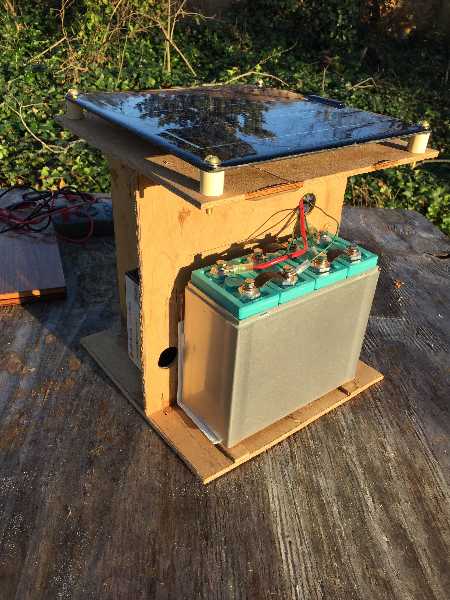
Here is a view of the prismatic cells
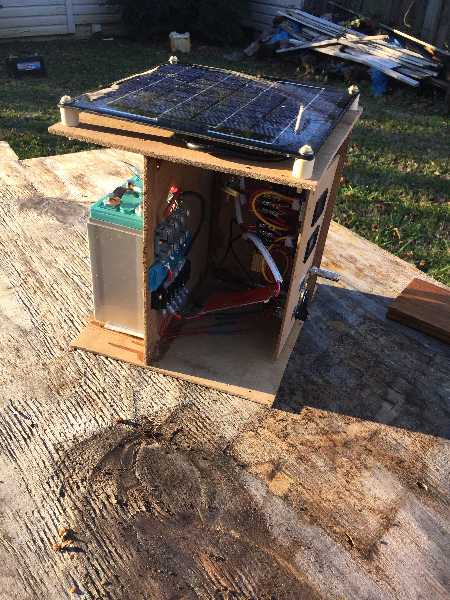
A view of the wiring
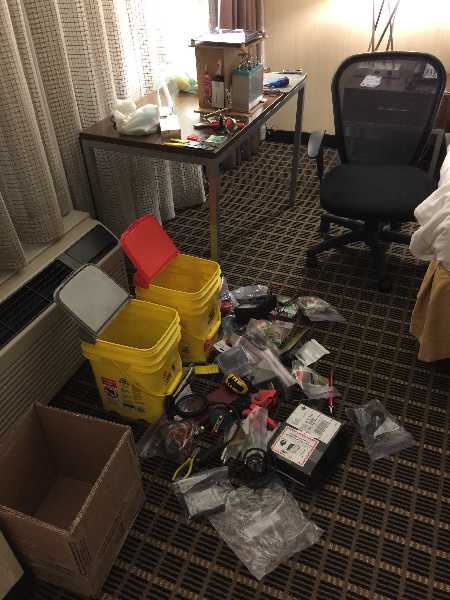
Here's my spread of electronic bits to work on this during a trip
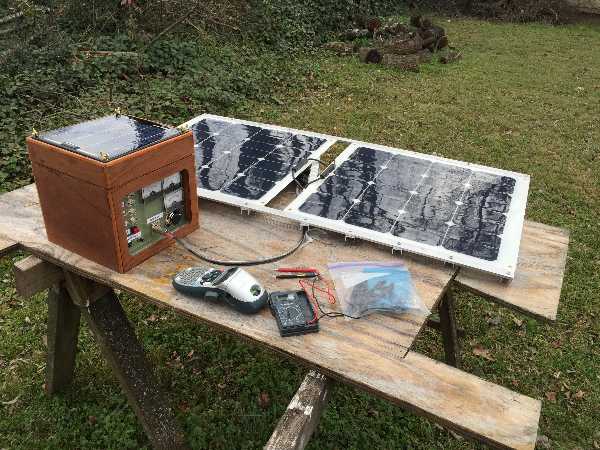
After a couple of iterations of trial and error I arrived at a workable arrangement. At this point I took the time to build a nicer box. I also went through some iterations of the solar panels. The first was based on an aluminum frame as pictured here. I later built a hinged box consisting of plywood panels riveted to aluminum C channel frame to keep the weight down.
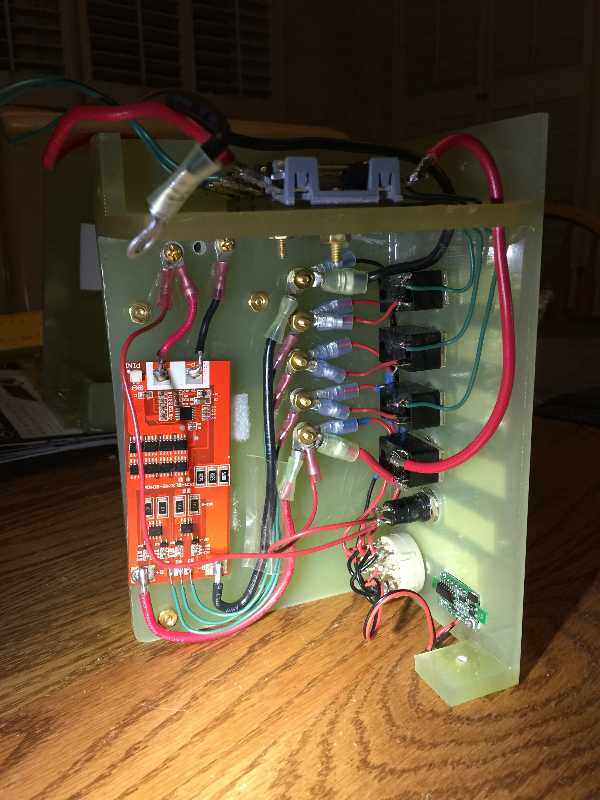
Neatly organized wiring is a big key to safety and reliability.
To improve reliability and safety it is good to try to organize the wiring as neatly as possible. This makes it easier to maintain, troubleshoot and make future modifications. Shown here is the battery management board. This board has 5 inputs wired to the cells so it can continuously monitor the cell voltage. Each cell has a fuse. The BMS has two outputs. If any of the individual cell voltages fall short of 2.5 volts it shuts down the outputs so that the stack cannot be further discharged. At that point an external charging source must be applied to reactivate the BMS. This BMS also has built in short protection.
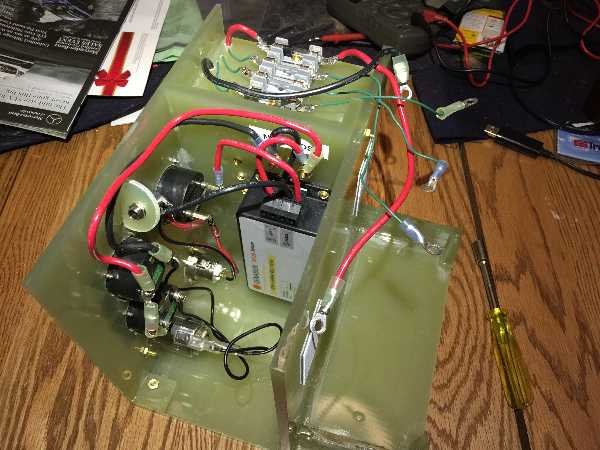
All the wiring and electrical parts are mounted on G10 board.
Another safety enhancement is the use of noncombustible substrate for mounting the components and wiring. G10 is a good material since it doesn't support combustion. G10 is made of fiberglass and epoxy. When a G10 board is tapped it rings sort of like a sheet of tempered glass. However it is quite shatter proof. It glues up nicely with West Epoxy.
Just to be sure I tested the combustability of G10 by lighting up a sliver with a match. It charred but as soon as I removed the match flame it went out. This lessens the chance of arcing leading to a fire.
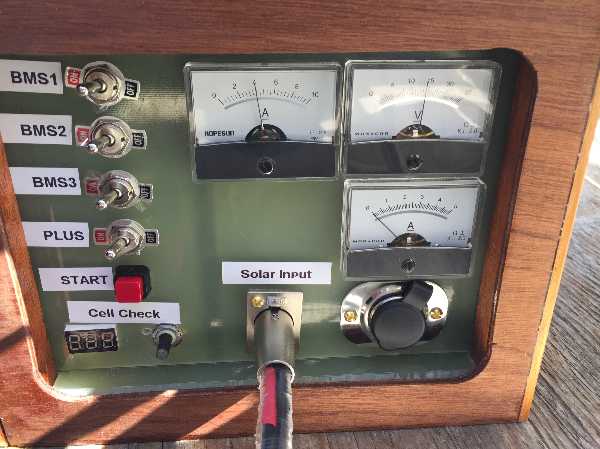
The front of the box
Various features shown here are described below
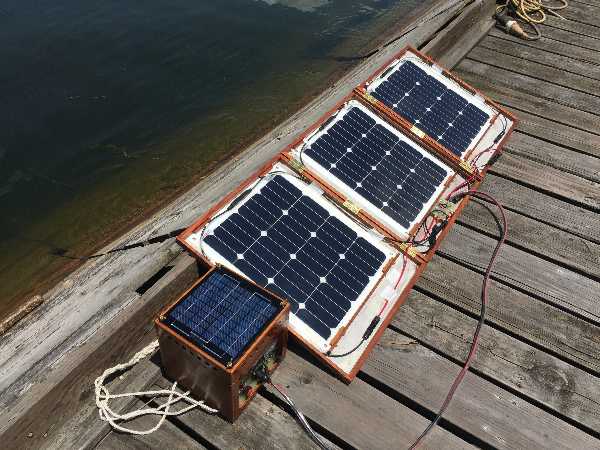
This is a later tri-fold panel that I made out of Sapele. It uses Aleko flexible solar panels. I took this picture in July 2017.
This has turned out to be a useful piece of equipment in its own right. In September 2016 it powered a fan in a gazebo where there was no outlets. It also provided sufficient 12v DC power for a hand held vacuum. It is a ready source of power if there is a prolonged blackout such as the one from April 27 to May 1, 2011 in north Alabama.
Future improvements may include: